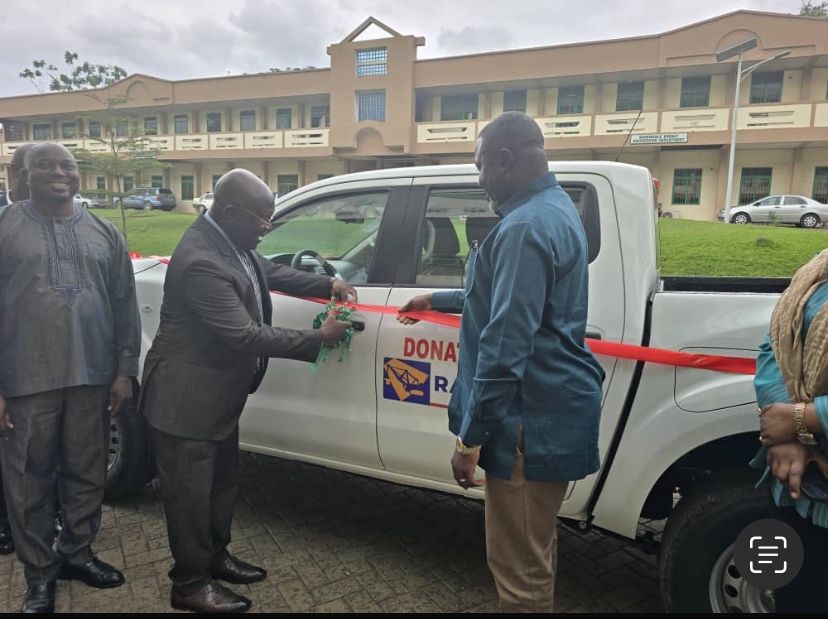In a significant stride toward educational and industrial synergy, RABOTEC GROUP, under the leadership of Chief Executive Officer Alhaji Ali Ibrahim and General Manager Ayesha Mahama, signed a Memorandum of Understanding (MoU) with the University of Mines and Technology (UMaT) on July 23, 2024. The agreement, marked by an elating ceremony, paves the way for the development of a dedicated mining concession for the practical training and education of UMaT students. Examples of top mining institutions that have dedicated mines for training include the Colorado School of Mines and Missouri University of Science and Technology (Missouri S&T).
Alhaji Ali Ibrahim, the dynamic CEO of RABOTEC GROUP, articulated the strategic importance of this collaboration. “This partnership with UMaT is a cornerstone of our strategic plan for skills and business development,” he stated. Alhaji Ibrahim underscored Rabotec’s commitment to the project, emphasizing that the company intends to be involved in the mining project from its developmental stages through to the life of mine (LOM). His vision is to establish this concession as the largest research mine in Africa. He assured the university of robust funding and pledged unwavering dedication to the initiative.
Vice Chancellor Prof. Richard Amankwah of UMaT highlighted the project’s progress during the MoU signing. The proposed UMaT Mining Concession, situated in the Wassa East District, has undergone preliminary exploration with support from the Minerals Commission of Ghana and is currently in the mine planning stage. Prof. Amankwah expressed optimism that, following the MoU signing, Rabotec and UMaT would quickly mobilize equipment and other essential resources to advance the project.

Adding a tangible touch to their commitment, Rabotec presented UMaT with a Nissan pickup truck to support its operational needs.
This partnership is poised to transform the educational landscape for mining in Ghana. For UMaT, this collaboration represents a significant leap in providing hands-on training to its students, aligning academic curricula with industry standards, and enhancing the employability of its graduates. Currently, UMaT produces over 500 graduates annually, many of whom enter the mining sector. The new mining concession could potentially increase this number by 20%, significantly boosting the workforce with well-trained professionals.
For Ghana, the project holds the promise of positioning the country as a leader in mining research and education in Africa. The mining sector contributes approximately 5% to Ghana’s GDP and employs around 1 million people directly and indirectly The establishment of such a large research mine in Africa could enhance Ghana’s mining sector’s contribution to GDP by up to 2%, translating to millions of dollars in additional revenue and creating numerous job opportunities.
As RABOTEC and UMaT embark on this ambitious venture, the broader implications for both institutions and the nation are profound. The successful development of the UMaT Mining Concession could set a precedent for future educational-industrial collaborations, fostering a new era of innovation, research, and economic growth in Ghana’s mining sector. The nation, renowned for its rich mineral resources, stands to gain not just economically but also in terms of capacity building and sustainable development.

This initiative, if realized to its full potential, could propel UMaT to the forefront of mining education globally, attract international partnerships, and enhance Ghana’s reputation as a hub for mining excellence. With the mining industry’s global market value expected to reach $1.84 trillion by 2027, Ghana’s strategic investments in mining education and research could yield substantial long-term benefits, positioning the country as a critical player on the global mining stage.
Formerly known as the “Gold Coast”, Ghana is Africa’s largest gold producer. The country has a rich history of gold mining, dating back to the 15th century, and today, gold mining is a major part of its economy, contributing over 40% of its total export earnings. Ghana has been severely affected by rampant informal mining activities, commonly known as Galamsey. This situation has spiraled out of control, leading to significant pollution of the nation’s surface water and groundwater resources. The unregulated nature of Galamsey operations has resulted in widespread environmental degradation, posing serious health risks to local communities and undermining sustainable development efforts in the country. In 2021, while serving as a lecturer, Professor Richard Amankwah, now the Vice Chancellor of UMaT, highlighted the harmful effects of using mercury in gold extraction. Speaking at the Alluvial Mining Field School organized by the Accra Mining Network, he outlined the dangers associated with mercury in the amalgamation process and introduced alternative methods for gold extraction that align with the Minamata Convention, which aims to reduce mercury pollution globally.

